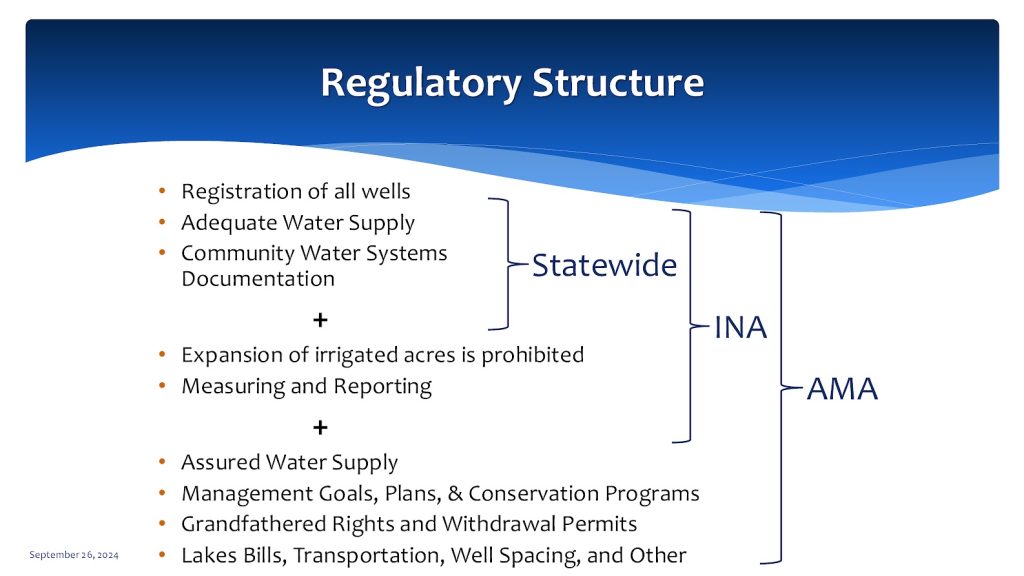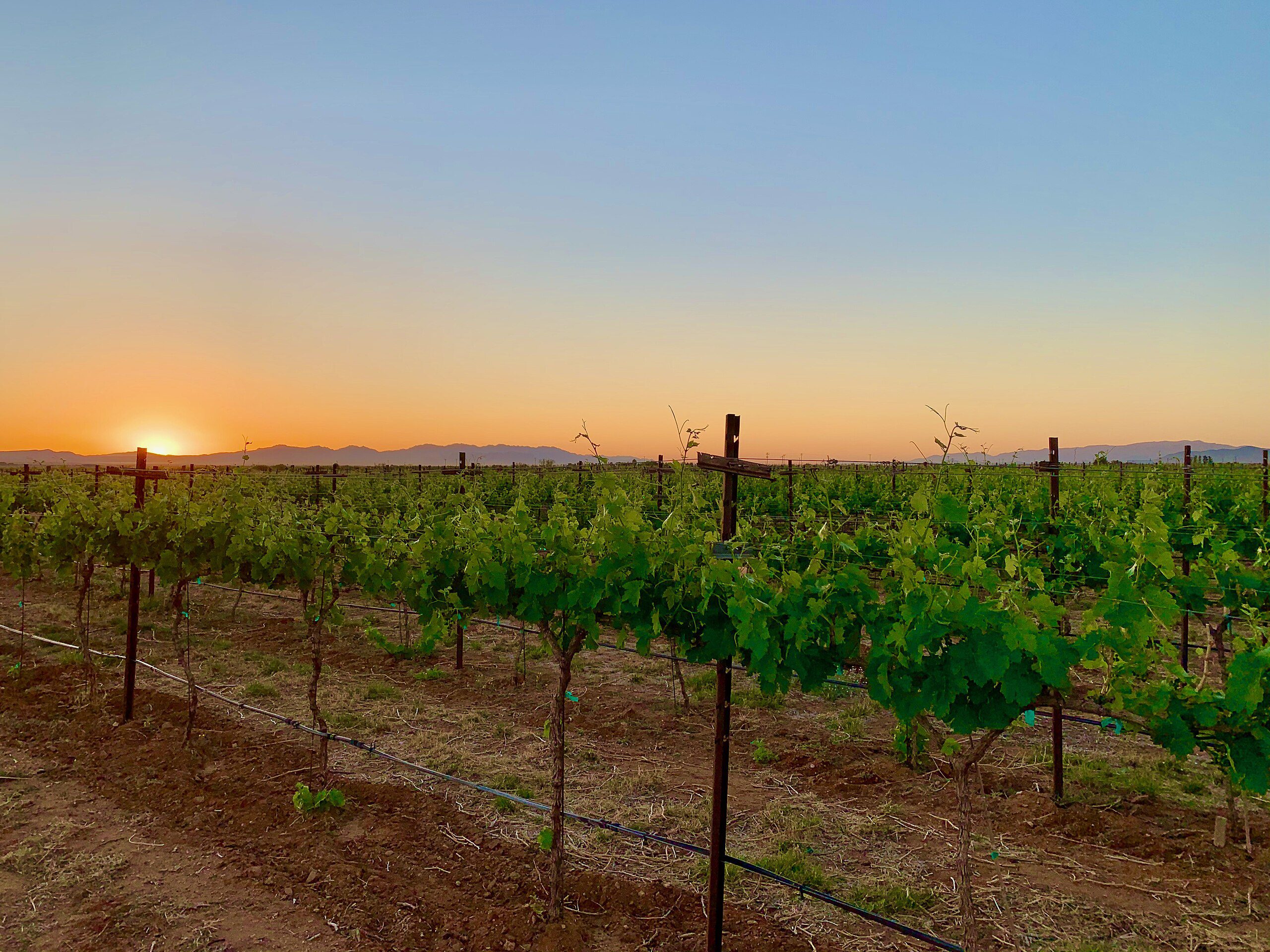- Groundwater levels in the Willcox Basin have dropped significantly since 1940.
- Residents are experiencing issues with deepening wells and surface fissures.
- Over 5.7 million acre-feet of groundwater have been extracted, comparable to two years’ worth of Arizona’s Colorado River allocation.
- Potential management options include stricter water regulations through AMAs or INAs.
- Political disagreements have stalled statewide efforts to manage rural groundwater.
October 8, 2024 — Rural Arizona, particularly the Willcox Basin, is facing groundwater depletion. The Willcox Basin’s groundwater depletion has been characterized as a critical issue threatening its residents’ livelihood and the region’s future. Groundwater is being pumped out of the basin at unsustainable rates, leading to serious consequences.
Groundwater Decline in the Willcox Basin.
The Arizona Department of Water Resources (ADWR) recently held a public meeting to address growing concerns about groundwater depletion in the Willcox Basin . According to ADWR’s Chief Hydrologist, Ryan Mitchell, more than 5.7 million acre-feet of groundwater have been extracted from the basin since 1940. To put that into perspective, this amount is comparable to two full years of Arizona’s annual Colorado River water allocation.
. According to ADWR’s Chief Hydrologist, Ryan Mitchell, more than 5.7 million acre-feet of groundwater have been extracted from the basin since 1940. To put that into perspective, this amount is comparable to two full years of Arizona’s annual Colorado River water allocation.
The depletion has caused groundwater levels to drop by up to 400 feet in some areas. This drop has led to land subsidence—where the ground sinks due to the removal of water—and surface fissures that can stretch for miles. Some areas have sunk as much as 11.5 feet since 1969.
Local Residents Share Concerns.
Residents shared their personal experiences with the water crisis at the public meeting. Many, like Sunsites resident Steve Kisiel, have been forced to deepen their wells, while others haul water due to a lack of viable options. Mark Jorve, a local winemaker, voiced his frustration, noting that the water table has dropped by 100 feet in the last 15 years.
Ranch owner Ray Ihly proposed rainwater harvesting as an alternative to drilling deeper wells, suggesting that more sustainable solutions might help ease the problem.
Groundwater Management Options.
ADWR presented several potential options to manage the groundwater crisis. These include creating Active Management Areas (AMAs) or Irrigation Non-expansion Areas (INAs). AMAs are stricter and require water providers to have assured water supplies for homeowners, while INAs impose some, but not all, of the consumer protections found in AMAs.

 — Slide from ADWR’s presentation at Willcox Basin public meeting.
— Slide from ADWR’s presentation at Willcox Basin public meeting.Currently, Arizona has six AMAs and three INAs. The process of creating these management structures can either be voted on by a local majority or established by the ADWR Director.
Political Stalemate on Rural Water Management.
Arizona Public Radio’s KJZZ reports that efforts to regulate groundwater in Arizona’s rural areas have stalled due to political disagreements. While urban areas have protections through AMAs, rural regions lack equivalent safeguards. Lawmakers on both sides agree that rural areas need protection, but the specifics of managing the issue remain a point of contention.
have stalled due to political disagreements. While urban areas have protections through AMAs, rural regions lack equivalent safeguards. Lawmakers on both sides agree that rural areas need protection, but the specifics of managing the issue remain a point of contention.
In recent months, attempts to reach bipartisan solutions have failed. Republican lawmakers expressed frustration over communication gaps, while Governor Katie Hobbs signaled her willingness to take executive action through ADWR if legislative solutions do not materialize.
The future of rural groundwater management in Arizona is uncertain. As groundwater levels continue to drop, residents and lawmakers alike are grappling with how to address this critical issue. Solutions may involve stricter regulations, new management areas, or executive actions if political compromises cannot be reached.
For now, the debate continues, and the residents of rural Arizona are left waiting for meaningful solutions that can secure their water future.
~~~
Image Credit:
“Willcox is a major wine grape production area . The many wineries are a big part of the Willcox economy.” By PAC55, May 2021. Licensed under the Creative Commons Attribution-Share Alike 4.0 International license.
. The many wineries are a big part of the Willcox economy.” By PAC55, May 2021. Licensed under the Creative Commons Attribution-Share Alike 4.0 International license.


It’s a complicated problem. We certainly need farms to survive, and many smaller family farms are doing what they can to conserve, often at a high cost. Meat consumption is a big and unsustainable contributor to various environmental issues, including water depletion. https://www.ncbi.nlm.nih.gov/pmc/articles/PMC7184671/
It’s a very complicated and expensive issue. Where we are, the aquifer is in good shape. But if there’s a blanket regulation that causes expensive reporting requirements and restrictions, I can guarantee you that it will put small family farms out of business, and that has a ripple effect. I don’t think a “one size fits all” solution exists.